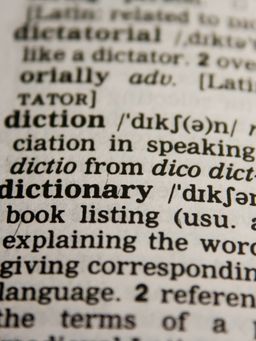selena@dyslexia-southwales.co.uk 07899 923352
"At Dyslexia's root is a natural ability, a talent. Dyslexia is not a complexity. It is a compound of simple factors which can be dealt with step-by-step." by Ronald D Davis
Davis® methods are different to interventions you've probably already experienced or heard about and yet Davis® is one of the world's most widely used dyslexia programmes.
The Davis® methods use the individual's natural talent of Perceptual Ability and of Mastery to overcome obstacles to learning. These talents are what dyslexics share with the dyslexic geniuses you often see listed. Ron Davis states that:
dyslexics don't all develop the same gifts but they do have certain mental functions in common, Here are the basic abilities dyslexics share-
1. They can utilize the brain's ability to alter and create perceptions (the primary ability)
2. They are highly aware of the environment
3. They are more curious than average
4. They think mainly in pictures [or feelings] instead of words
5. They are highly intuitive and insightful
6. They think and perceive multidimensionally (using all senses)
7. They can experience thought as reality
8. They have vivid imaginations...





Visual-Spatial Thinking
"He is flying with his reading and writing - I am in awe of what your intervention has done for him..."(see Testimonials page)
...Dyslexia is the result of a perceptual talent. In some situations, the talent becomes a liability. The individual doesn’t realize this is happening because use of the talent has become integrated into the thought process.
People think in both verbal [words/monologue] and nonverbal modes [pictures/feelings/senses], but being human, we have a tendency to specialize. Each person will practice one mode as his primary mode of thinking and the other as a secondary mode.
During the period when the learning disability aspect of dyslexia is formed, between the ages of three and thirteen, the potential dyslexic must be primarily a nonverbal thinker – a person who thinks in pictures.
So if we accept that dyslexics are visual-spatial thinkers it may help you to see why the Davis® dyslexia method DOES NOT follow the PHONICS (word sounding) approach. A typical phonics approach does not address all 3 parts of the word that are so critical for a dyslexic learner - it does not give the all important MEANING (or picture/sense) of the word, focussing on the spelling and the pronunciation alone are simply not enough!
The global Davis Dyslexia Association site has compiled a list of 37 common traits (https://www.dyslexia.com) Most dyslexics will exhibit about 10 of the following traits and behaviors.
These characteristics can vary from day-to-day or minute-to-minute. The most consistent thing about dyslexics is their inconsistency.

General:
- Appears bright, highly intelligent, and articulate but unable to read, write, or spell at grade level.
- Labelled lazy, dumb, careless, immature, “not trying hard enough,” or “behavior problem.”
- Isn’t “behind enough” or “bad enough” to be helped in the school setting.
- High in IQ, yet may not test well academically; tests well orally, but not written.
- Feels dumb; has poor self-esteem; hides or covers up weaknesses with ingenious compensatory strategies; easily frustrated and emotional about school reading or testing.
- Talented in art, drama, music, sports, mechanics, story-telling, sales, business, designing, building, or engineering.
- Seems to “Zone out” or daydream often; gets lost easily or loses track of time.
- Difficulty sustaining attention; seems “hyper” or “daydreamer.”
- Learns best through hands-on experience, demonstrations, experimentation, observation, and visual aids.
Memory and Cognition:
- Excellent long-term memory for experiences, locations, and faces.
- Poor memory for sequences, facts and information that has not been experienced.
- Thinks primarily with images and feeling, not sounds or words (little internal dialogue).

Vision, Reading, and Spelling:
- Complains of dizziness, headaches or stomach aches while reading.
- Confused by letters, numbers, words, sequences, or verbal explanations.
- Reading or writing shows repetitions, additions, transpositions, omissions, substitutions, and reversals in letters, numbers and/or words.
- Complains of feeling or seeing non-existent movement while reading, writing, or copying.
- Seems to have difficulty with vision, yet eye exams don’t reveal a problem.
- Extremely keen sighted and observant, or lacks depth perception and peripheral vision.
- Reads and rereads with little comprehension.
- Spells phonetically and inconsistently.
Math and Time Management:
- Has difficulty telling time, managing time, learning sequenced information or tasks, or being on time.
- Computing math shows dependence on finger counting and other tricks; knows answers, but can’t do it on paper.
- Can count, but has difficulty counting objects and dealing with money.
- Can do arithmetic, but fails word problems; cannot grasp algebra or higher math.

Writing and Motor Skills:
- Trouble with writing or copying; pencil grip is unusual; handwriting varies or is illegible.
- Clumsy, uncoordinated, poor at ball or team sports; difficulties with fine and/or gross motor skills and tasks; prone to motion-sickness.
- Can be ambidextrous, and often confuses left/right, over/under.
Hearing and Speech:
- Has extended hearing; hears things not said or apparent to others; easily distracted by sounds.
- Difficulty putting thoughts into words; speaks in halting phrases; leaves sentences incomplete; stutters under stress; mispronounces long words, or transposes phrases, words, and syllables when speaking.
Behavior, Health, Development, and Personality:
- Extremely disorderly or compulsively orderly.
- Can be class clown, trouble-maker, or too quiet.
- Had unusually early or late developmental stages (talking, crawling, walking, tying shoes).
- Prone to ear infections; sensitive to foods, additives, and chemical products.
- Can be an extra deep or light sleeper; bedwetting beyond appropriate age.
- Unusually high or low tolerance for pain.
- Strong sense of justice; emotionally sensitive; strives for perfection.
- Mistakes and symptoms increase dramatically with confusion, time pressure, emotional stress, or poor health.

Dyslexic children and adults can become avid and enthusiastic readers when given learning tools that fit their creative learning style.
Why not take the free Dyslexia Screening on the Davis Test website. This free, secure and confidential screening assessment will give a profile of learning strengths and weaknesses, including a measure of severity of symptoms.
Professional services described as Davis®, including Davis® Dyslexia Correction, Davis® Symbol Mastery, Davis® Orientation Counseling, Davis® Attention Mastery, Davis® Math Mastery, and Davis® Reading Program for Young Learners may only be provided by persons who are trained and licensed as Davis Facilitators or Specialists by Davis Dyslexia Association International.